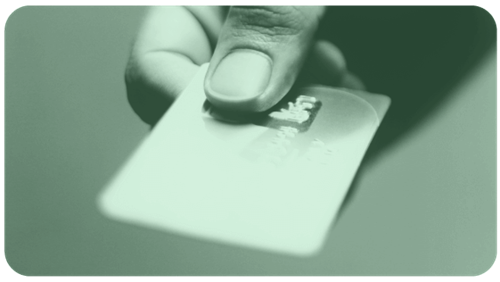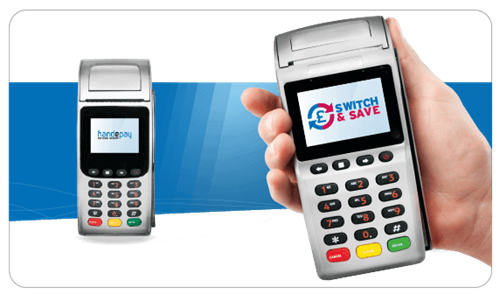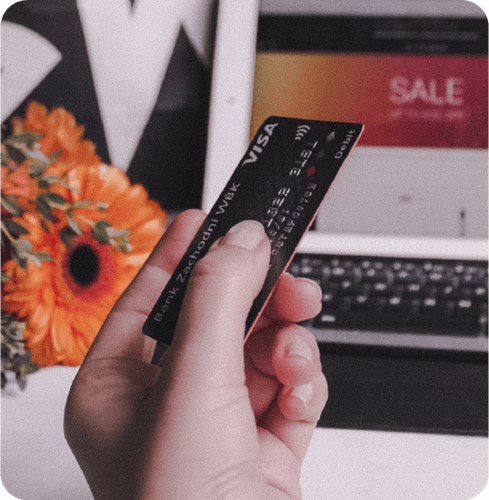What are NFC payments?
NFC payments are contactless transactions that enable you to pay without entering your PIN number. NFC payments can be made using a smart device or a contactless-enabled card.
NFC stands for ‘Near Field Communication’ - which is the type of technology used to facilitate this type of contactless payment.
It sounds complex, but in reality you’ve probably encountered it many times before. That’s why it’s important for businesses to understand exactly how it works and why it’s of particular benefit to the modern consumer.
Below you’ll find the answers to some of the most frequently asked questions on the topic - so, if you want to learn more about NFC payments, then you’ve certainly come to the right place!

How does NFC work?
Again, it might sound complicated. But NFC technology is easy to wrap your head around once you understand how it enables contactless transactions.
In simple terms, NFC enables two devices to connect wirelessly within a certain range from one another (usually two inches max). In terms of contactless payments, one of the two devices will always be the merchant’s contactless card reader.
The other device will be the customers contactless card - which could be presented in physical form, or digitally via a smart device (through the Apple Pay, Samsung Pay, Google Pay etc.).
Once presented, the card will transmit encrypted payment data to the card reader via radio waves. This is called Radio-Frequency identification (RFID).
Examples of NFC technology
The two main examples of NFC technology in action are the two we’ve just mentioned - contactless cards and contactless card readers.
The integrated circuit chip inside a credit or debit card connects with an NFC enabled card reader at the point of sale.
Contactless digital wallet payments work in a similar way. An NFC compatible mobile device will also feature technology that can communicate with a contactless card reader, once the customer has set up their digital wallet.

How to use NFC
If you’re paying with a contactless card, all you need to do is hold your card within range, or tap it against the card reader and wait for approval. You will usually hear a beep, or see an approval screen on the terminal.
Approval signals that both devices have recognised one another, and payment can commence through near field communication.
If you’re using Apple Pay, Samsung Pay, or Google Pay - bear in mind that the NFC mobile payment method varies depending on how you initiate your digital wallet on your device (for example, you normally double-tap the ‘home’ button on Apple devices to access your digital wallet).
Other than that, it’s basically the same. Once you’ve initiated your digital wallet on your device - all you need to do is hold your device within range and wait for approval.
Again, depending on which type of digital wallet you use, it’s likely that your device will receive a payment notification once the transaction has been authorised.
What are the advantages of NFC payments?
NFC payments are beneficial to businesses and consumers.
From a consumer perspective, they’re quick and convenient, alleviating the need for them to carry a wallet or purse on their person.
As far as businesses are concerned, the speed at which transactions can be made via NFC technology reduces queue times - freeing up staff and generally making the workplace more efficient.
If your business embraces NFC payments it demonstrates that you’re a forward-thinking company with efficiency and convenience for your customers in mind at all times.


What are the disadvantages of NFC payments
Due to their speed and convenience for businesses and customers, it’s hard to highlight any real disadvantages with NFC payments.
However, you could argue that there are a few minor limitations to NFC technology - such as the fact that it can only work from fairly short distances, for example.
Power consumption is also typically higher in NFC devices, but as long as you stay on top of charging them throughout the day - you shouldn’t run into too many issues.
NFC vs EMV
NFC and EMV are both types of contactless technologies that complement each other.
Credit cards and debit cards use EMV - which originally stood for ‘Europay, Mastercard and Visa’.
This is essentially facilitated via the chip in each card. This enables cards to perform the Chip & PIN function in traditional card readers, but it can also be compatible for NFC payments - which is indicated by the contactless symbol on each card to indicate.

Is NFC secure?
Yes - NFC is very secure. In fact, many people argue that NFC payments are more secure than traditional payments.
That’s because they have a number of additional security features in place that greatly reduce the risk of fraud.
The main example for NFC would be payment tokenisation - which is used in different ways by Apple Pay, Samsung Pay and Google Pay.
This is where the customer’s card number is encrypted and passed through NFC during the contactless payment as a ‘token’.
Also, because NFC is for contactless payments there is usually a maximum £45 limit set per transaction. So, if your card or mobile device is stolen, the likelihood of losing a lot of money is significantly reduced.
Is NFC contactless?
Yes - NFC technology is contactless.
To reiterate the above, NFC is a wireless technology that relies on radio waves to enable contactless cards and digital wallets to communicate with contactless card readers.
How much do NFC card machines cost?
It’s virtually impossible to give you a ‘ballpark’ figure in terms of how much it costs to set up and maintain NFC card readers. The same applies to processing costs.
This is because quotes vary from provider to provider - so it’s always worth shopping around and talking to numerous merchant service providers before starting a contract.
You never know if a better deal might be around the corner.
How to accept NFC payments
First and foremost, in order to start accepting NFC payments - your business needs a contactless-enabled card machine.
All Handepay devices not accept mobile and contactless card payments via Apple Pay, Samsung Pay and Google Pay. This includes our range of:
Countertop card machines
Portable card machines
Mobile card machines
Each card machine is equipped with a colour screen and thermal printer - as well as being certified to the industry’s latest standard.
Get in touch to find out more today.
Would you like
a callback?
FIND OUT MORE
Talk to an advisor today...


